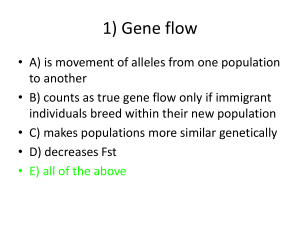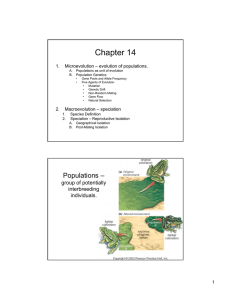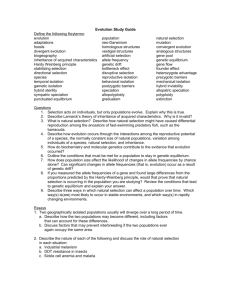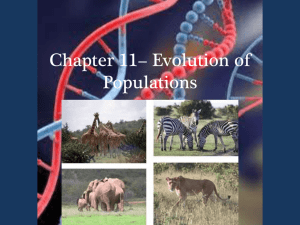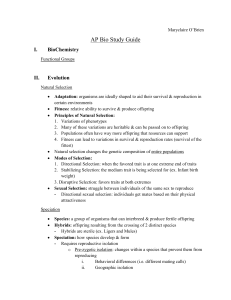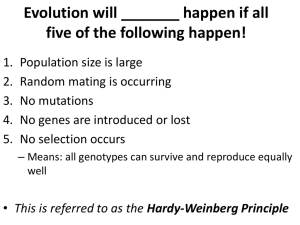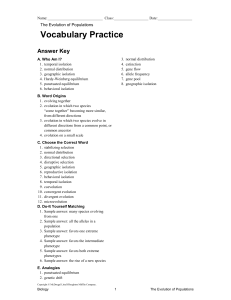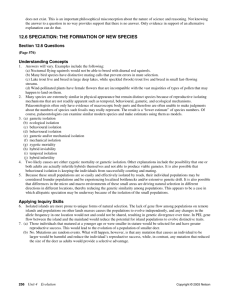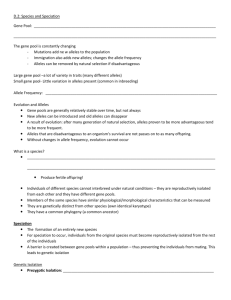Biology Chapter 11 Vocabulary Review Worksheet
advertisement
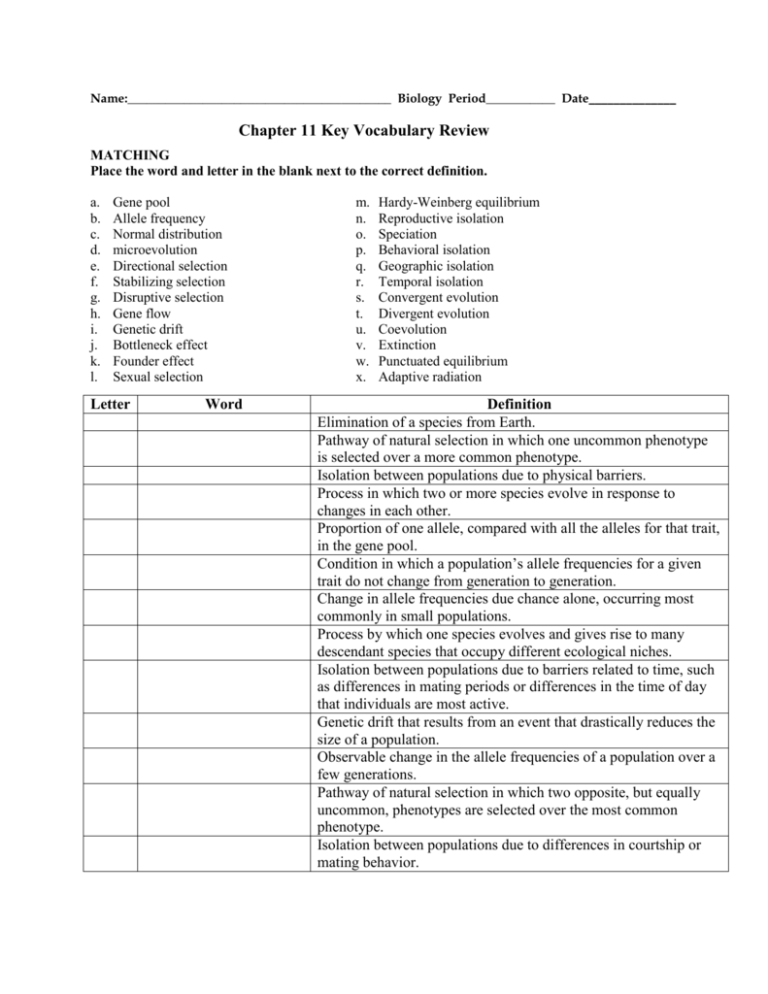
Name:__________________________________________ Biology Period___________ Date______________ Chapter 11 Key Vocabulary Review MATCHING Place the word and letter in the blank next to the correct definition. a. b. c. d. e. f. g. h. i. j. k. l. Gene pool Allele frequency Normal distribution microevolution Directional selection Stabilizing selection Disruptive selection Gene flow Genetic drift Bottleneck effect Founder effect Sexual selection Letter Word m. n. o. p. q. r. s. t. u. v. w. x. Hardy-Weinberg equilibrium Reproductive isolation Speciation Behavioral isolation Geographic isolation Temporal isolation Convergent evolution Divergent evolution Coevolution Extinction Punctuated equilibrium Adaptive radiation Definition Elimination of a species from Earth. Pathway of natural selection in which one uncommon phenotype is selected over a more common phenotype. Isolation between populations due to physical barriers. Process in which two or more species evolve in response to changes in each other. Proportion of one allele, compared with all the alleles for that trait, in the gene pool. Condition in which a population’s allele frequencies for a given trait do not change from generation to generation. Change in allele frequencies due chance alone, occurring most commonly in small populations. Process by which one species evolves and gives rise to many descendant species that occupy different ecological niches. Isolation between populations due to barriers related to time, such as differences in mating periods or differences in the time of day that individuals are most active. Genetic drift that results from an event that drastically reduces the size of a population. Observable change in the allele frequencies of a population over a few generations. Pathway of natural selection in which two opposite, but equally uncommon, phenotypes are selected over the most common phenotype. Isolation between populations due to differences in courtship or mating behavior. Evolution of one or more closely related species into different species; resulting from adaptations to different environmental conditions. Collection of alleles found in all of the individuals of a population. Final stage in speciation, in which members of isolated populations are either no longer able to mate or no longer able to produce viable offspring. Genetic drift that occurs after a small number of individuals colonize a new area. Pathway of natural selection in which intermediate phenotypes are selected over phenotypes at both extremes. Distribution in a population in which allele frequency is highest near the mean range value and decreases progressively toward each extreme end. Evolution of two or more species from one ancestral species. Theory that states that speciation occurs suddenly and rapidly followed by long periods of little evolutionary change. Selection in which certain traits enhance mating success; traits are, therefore, passed on to offspring. Evolution towards similar characteristics in unrelated species, resulting from adaptations to similar environmental conditions. Physical movement of alleles from one population to another.
